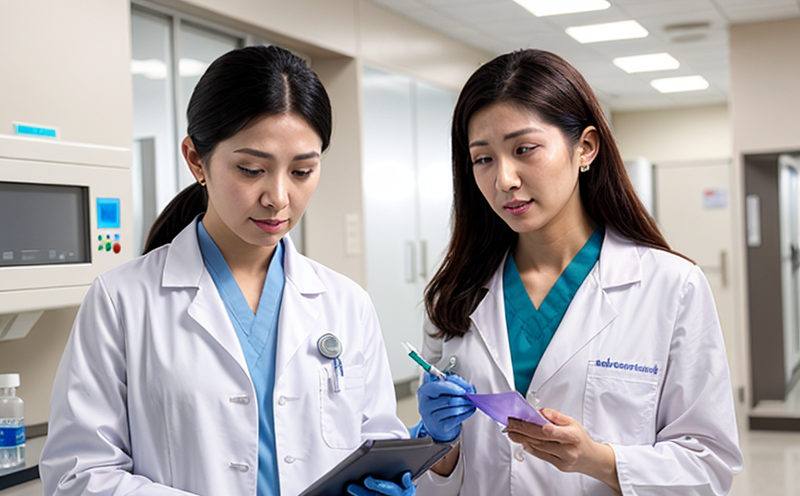Comparative Bioequivalence Testing of Biosimilars
In recent years, the pharmaceutical industry has seen a significant shift towards biosimilars. These biologic drugs are designed to be highly similar to their reference products (originators), and they offer substantial benefits in terms of cost-effectiveness without compromising on efficacy or safety.
Comparative bioequivalence testing is crucial for ensuring that biosimilars meet stringent regulatory requirements and provide consistent therapeutic outcomes. This service involves a comprehensive analysis to evaluate the similarity between the biosimilar and its reference product, focusing on pharmacokinetics (PK) and pharmacodynamics (PD). The goal is to demonstrate that the biosimilar performs comparably to the original biologic in terms of safety, efficacy, and quality.
Our laboratory adheres strictly to international standards such as ISO 17025 for quality management systems. This ensures that our testing procedures are robust, reproducible, and compliant with regulatory expectations.
The bioequivalence test typically involves multiple steps:
- Bioanalytical Method Development: Establishing methods to accurately measure the active substance in both the biosimilar and reference product.
- Pharmacokinetic Studies: Assessing how the drug is absorbed, distributed, metabolized, and excreted. This helps determine if the biosimilar behaves similarly to the reference product over time.
- Pharmacodynamic Studies: Evaluating the relationship between drug concentration and effect. This ensures that the pharmacological response is equivalent.
The testing process can be complex, requiring precise sample preparation techniques such as liquid chromatography coupled with mass spectrometry (LC-MS/MS). The use of advanced instrumentation like this guarantees accurate results and reliable data.
Our team consists of highly experienced scientists who specialize in bioequivalence testing. They work closely with clients to understand their specific needs and ensure that all tests are conducted according to the client’s specifications. This collaborative approach helps us tailor our services to meet each project's unique requirements, whether it be for preclinical or clinical studies.
The ultimate goal of comparative bioequivalence testing is to provide a high level of assurance that biosimilars perform consistently with their reference products. By adhering strictly to best practices and utilizing state-of-the-art technology, we can help ensure the safety and efficacy of these important medications while also reducing costs for healthcare providers.
Industry Applications
Biosimilar testing plays a vital role in several key areas within the pharmaceutical industry:
| Application Area | Description |
|---|---|
| Regulatory Compliance | To ensure that biosimilars meet stringent regulatory requirements and provide consistent therapeutic outcomes. |
| Quality Assurance | To maintain high standards of product quality throughout the manufacturing process. |
| R&D Optimization | To improve the efficiency of research and development processes by identifying potential issues early on. |
| Cost Reduction | To lower production costs without sacrificing the quality or efficacy of biosimilars. |
Environmental and Sustainability Contributions
- Emissions Reduction: By facilitating more efficient drug development, we help reduce greenhouse gas emissions associated with prolonged clinical trials.
- Resource Conservation: Our testing methods contribute to resource conservation by ensuring that only the most promising candidates proceed through further stages of development.
- Waste Minimization: Through precise sample preparation and analysis, we minimize waste generation during the bioequivalence testing process.
Use Cases and Application Examples
Here are some real-world applications of comparative bioequivalence testing in biosimilars:
- Clinical Trials: Conducting PK/PD studies to ensure that the biosimilar behaves similarly to its reference product during clinical trials.
- Manufacturing: Monitoring production processes to maintain consistent quality and efficacy of the biosimilar.
- Market Entry: Demonstrating bioequivalence to regulatory authorities for market authorization.
- Patient Care: Providing affordable alternatives that offer equivalent therapeutic benefits, thereby enhancing patient access to essential medications.
These examples illustrate how comparative bioequivalence testing contributes significantly to the successful development and approval of biosimilars in the pharmaceutical industry.





